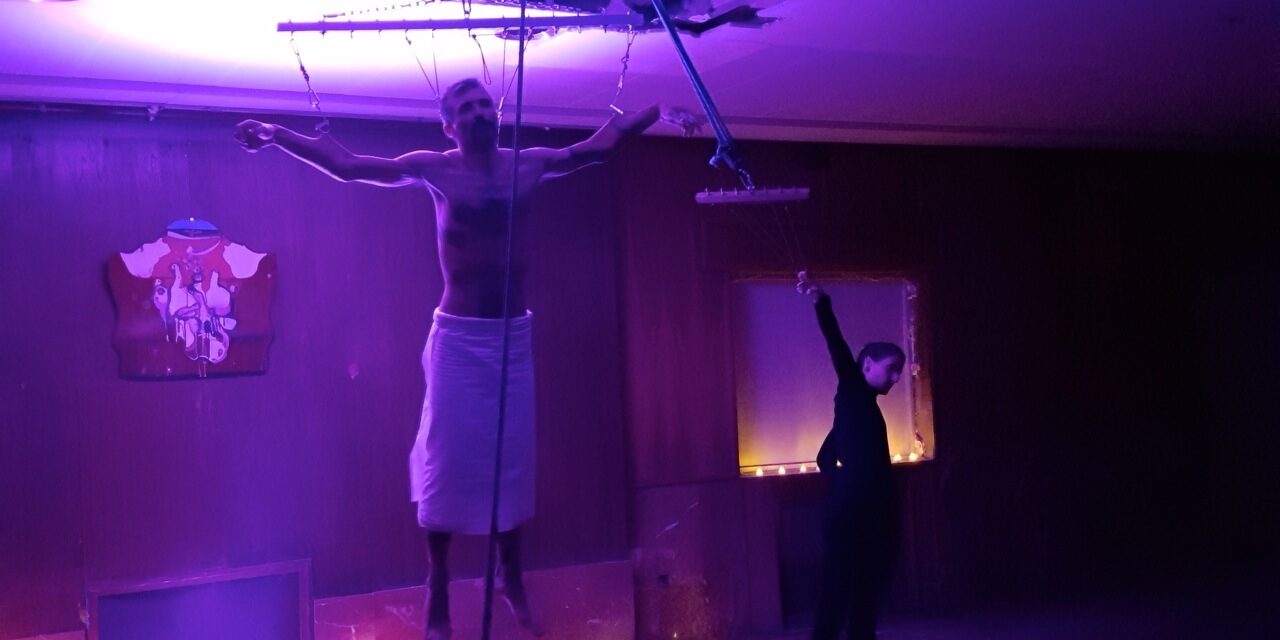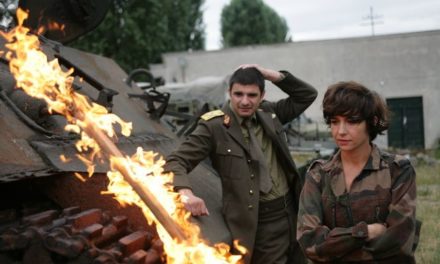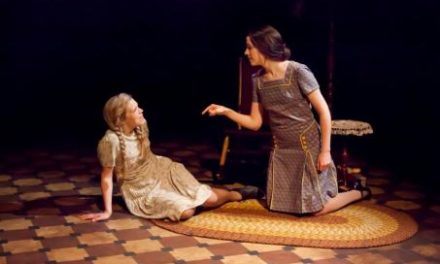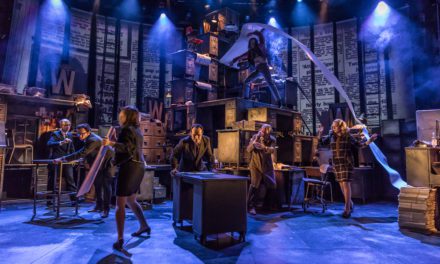It is autumn in Madrid, Spain. A small group of theatergoers has arrived at Zapadores, a new art space. It is on the outskirts, close to a railway, far from any inhabited places apart from gypsy shacks. It is the last day of Festival Místicas. A festival, which has lasted 2 weeks, whose main purpose has been to bring up-to-date forgotten religious female voices from XII to XVIII.
The festival, organized for the first time in the capital of Spain, brought together theater professionals with nuns, monks, theologians, and spectators. They discussed staging plays and the writings and poems of women who were removed from history textbooks and literature, women who had an important role in their times. Some of them are well known, for example, St. Teresa of Ávila or Hildegard of Bingen, or completely unknown like St. Anne of Jesus or sister Juana de la Cruz.
This was a festival that included conferences, actor training, works in progress, discussions and, above all, performances. Most of them, biased towards a contemporary style, ranged from devised theater in convents to contemporary dance in churches. The experiences were so unique that it would be impossible to recreate this festival.
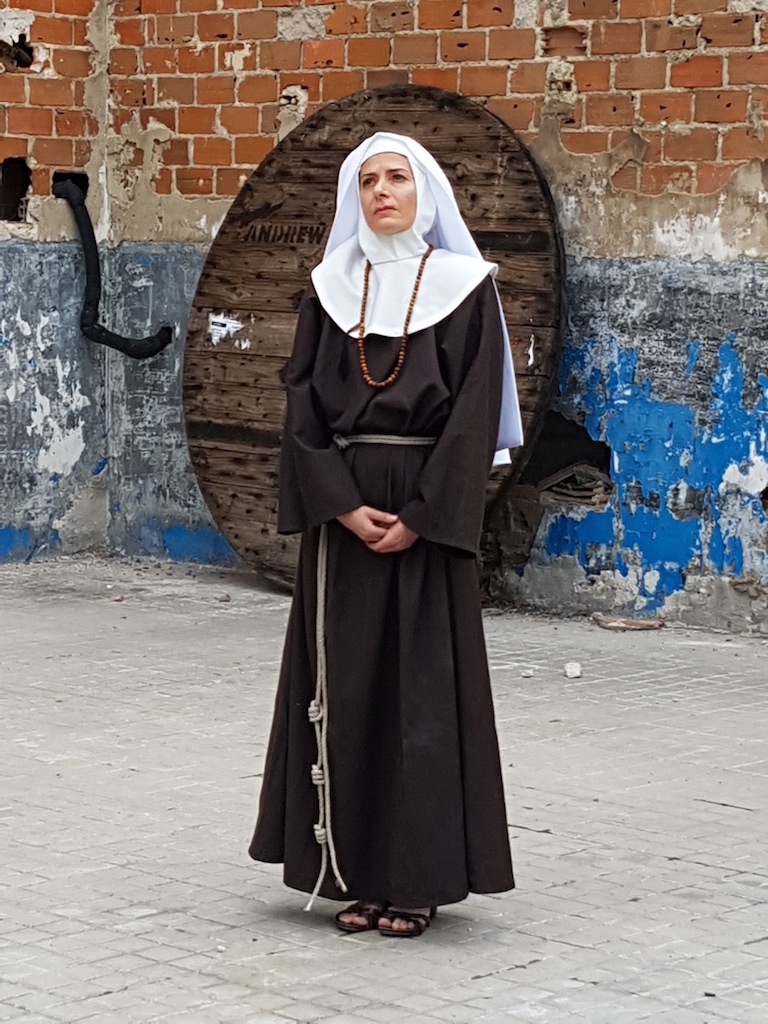
Photo By Antonio Hernández Nieto.
It was amazing to be part of the small group that attended Modos de Visitar Conventos (Ways of Visiting Convents) by Las Torneras. It is a show that has been performed very few times because cloistered convents are reluctant to let ordinary people go into some units that are usually closed for visitors. Las Torneras got permission, and a few spectators were invited to listen to Spanish Golden Age poems written by nuns, to watch a short comedy, and to eat the same food that nuns usually eat in various rooms of the convent. It was such a moving experience that instead of applause at the end, people left the place in silence. Nobody wanted to break the magic moment that performers were able to build.
Fe Oscura (Dark Faith) is a play by Carmen Sánchez Molina that is not yet finished but had its first dramatic reading in a small renowned theater, Espacio Guindalera. It is a story about how a woman from XXI century was inspired by the famous nun Hildegarda bo Bingen and focuses on her faith and how she lived. It was a faith-based on nothing apart from her intuition of God. This is a concept that is completely the opposite of sentiments nowadays when transparency is a value and companies or our societies are organized to provide it and to be trustworthy. The play illustrates a parallel between the main character, who is a young and professional women, and Hildegarda. It tries to underline that it is not easy, and it never was, for smart women to be activists. It shows how wisdom and determination make them suspicious, and how society condemns them for those same reasons.
Esta Divina Prisión (This Divine Imprisonment) was another of the highlights of the festival. It was performed in Teatro de la Comedia, house of the Spanish Classic Theater Company (Compañía Nacional de Teatro Clásico, CNTC). The show consisted of reading poems. The readers were three talented theater Spanish actors (Lola Casamayor, Eva Rufoy Jesús Noguero) accompanied by a pianist on a black stage with a baroque still life that included bread and a skull. Ana Contreras, who is the artistic director of the festival, directed this performance with simplicity and expertise. Raúl Losánez, a renowned Spanish theater critic and poet selected the poems. The audience was touched in such a powerful way by the texts that they sat in their seats for a while after the end of the performance and stayed in the lobby. Most of the professionals responding to the show agreed that the show should tour.
One of the pinnacles of the festival was put on just last weekend. It was Muerte del apetito (Death of Appetite) by Sister Marcela de San Félix, Lope de Vega’s daughter. It is a funny entremésor auto sacramental (a short allegorical religious play) that was staged by the company La Finea Teatro in the Church of the Convent of the Barefoot Trinitarias of San Ildefonso. The place chosen is the convent where sister Marcela lived and was buried. Cervantes, author of Don Quixote, and his wife are buried in that church as well. Moreover, it was the first time that the nuns who live in the convent had a chance to see the play. All of these factors made the demand for seats very high. The expectations were met. The show was a play about how a young nun should avoid temptations. The company has made a musical comedy in which castanets, a typical Spanish instrument, play an important role.
The Spanish company El Curro DT, a theater company that has its own small space in Madrid, presented La Insigne Monja Gerónima (The Distinguished Nun Gerónima). This dance piece is choreography based on the Mexican sister Juan Inés de la Cruz. It was performed in O_Lumen, an amazing space that was a church before it was transformed into a place for exhibitions of religious contemporary art. The piece consists of groups of four dancers and an actor that read and repeated the words of sister Juana. All of the words were about her need of learning how to read and write in order to become a wise person. However, as she could not achieve this wisdom status because she was a woman, she named herself the worst in the world and prays, “Lord, make me a saint!” It was a prayer that could be the motto of many of these women writers selected by the festival.
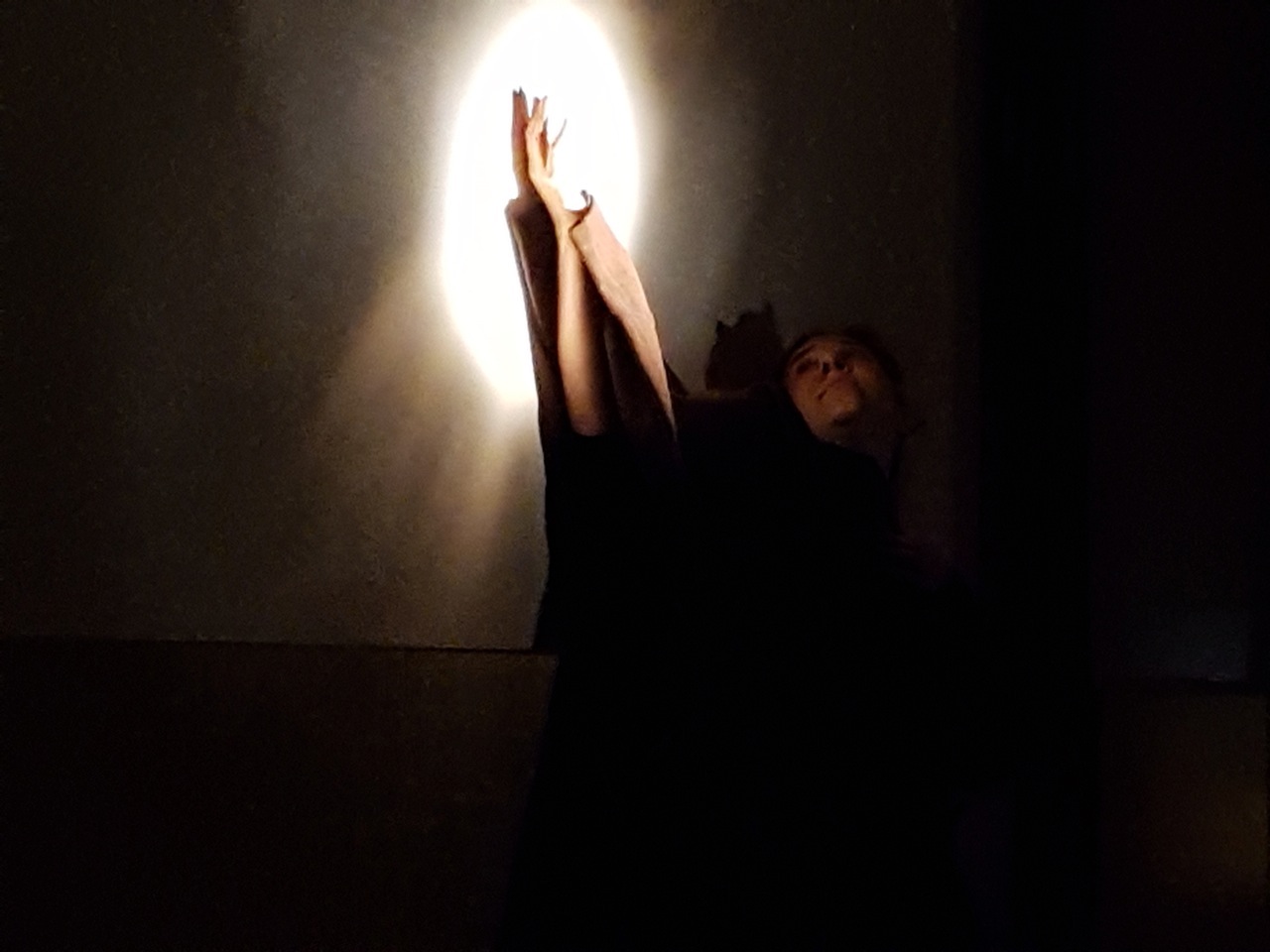
Photo By Antonio Hernández Nieto.
The closing of the festival was Como alambre muy delgado (Like a Very Thin Wire). It took place in Zapadores, an old military barracks converted into a 21st-century art museum. It is the second show that Ana Contreras directed in this festival. It is a show that she has performed several times in different cities and she has had adapted to different places around Spain according to the resources she has in each place. In this case, she was featured along with other actresses and singers. It is the first time that she incorporated two fakirs to the performance and one of the fakirs was a woman. This piece is played in scenes that were staged in different spaces of the museum and also the patio, to give voice to sister Juana de la Cruz, a very important person, who advised Emperor Charles V, Cardinal Cisneros or Great Captain. However, few people know her. The long performance includes scenes of a person crucified as Jesus and a woman who plays sister Juana ascending to embrace him in one of the most thrilling scenes of the piece. A show, which purpose is to make the audience feel something, more than rationalizes the staging. The religious music from the Spanish Golden Age also plays an important role in the way the audience enjoyed the piece. It is a play that demonstrates how close the western spiritual ways are to most spiritual trends nowadays.
In conclusion, it was a festival that concentrated many activities into two weeks for many small audiences. It showcased how the contemporary theater could update the plays, poems, writings, and history for diverse audiences, not only believers. Furthermore, people who attended the performances realized that those women have key things to say about us and about what is happening now. They are classic stories. Consequently, the festival efforts have yielded their successes. Primarily, bringing up-to-date interesting voices from the past that have been forgotten or hidden. Finally, the festival shows that those voices could reach modern audiences if they are staged with contemporary performance resources and techniques such as devised theater, contemporary dance or suspension bodies.
Edited by Carrie Klewin Lawrence
This post was written by the author in their personal capacity.The opinions expressed in this article are the author’s own and do not reflect the view of The Theatre Times, their staff or collaborators.
This post was written by Antonio Hernández Nieto.
The views expressed here belong to the author and do not necessarily reflect our views and opinions.

